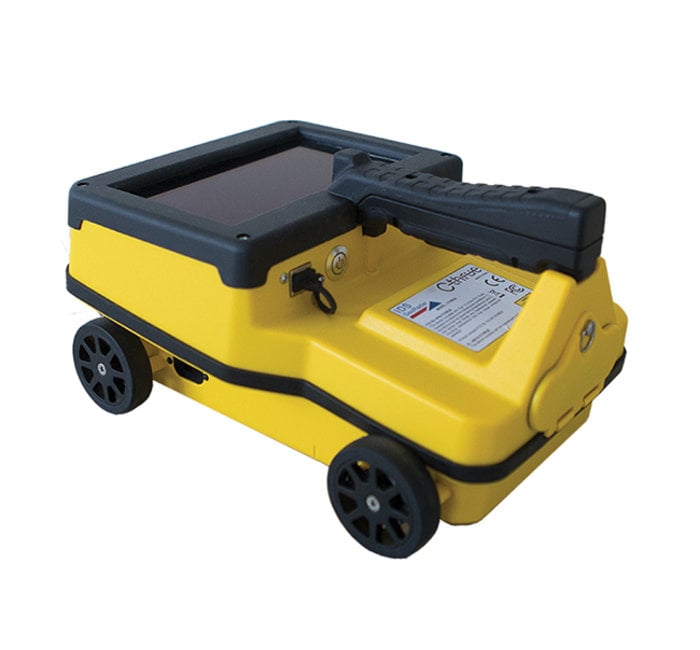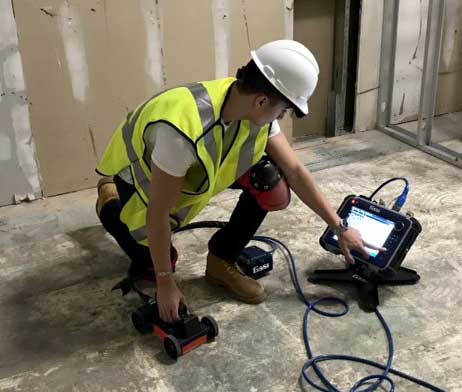RainierGPR Service Areas: Where We Provide Premier Concrete Scanning
RainierGPR Service Areas: Where We Provide Premier Concrete Scanning
Blog Article
Concrete Scanning: An Important Action In The Direction Of Making Sure Structural Integrity and Security
In the realm of building and construction and facilities upkeep, the importance of concrete scanning can not be overstated. By using advanced innovation and methods, concrete scanning serves as a pivotal device in making sure that the stability and safety of bridges and buildings are promoted to the highest standards.
Relevance of Concrete Scanning
Concrete scanning plays a crucial duty in guaranteeing the architectural stability and security of structures and framework projects. By using advanced modern technologies such as ground-penetrating radar (GPR) and electro-magnetic induction, specialists can non-destructively inspect concrete frameworks to find potential problems, gaps, embedded objects, and support design. This procedure makes it possible for very early detection of anomalies that might jeopardize the security of a framework, avoiding expensive problems and making sure the safety and security of residents.
Concrete scanning is specifically essential during the planning and construction phases of a job. Before boring, cutting, or coring right into concrete, scanning aids recognize the specific areas of rebar, post-tension wires, and other ingrained components, reducing the risk of unexpected hits that can bring about architectural weak points. Additionally, concrete scanning aids in high quality control by confirming the thickness of concrete covers and discovering any kind of disparities that might impact the general longevity of the structure. Inevitably, investing in concrete scanning services is not just an aggressive action to minimize dangers however also a fundamental action in the direction of maintaining the lasting security and security of buildings and infrastructure.
Modern Technology for Concrete Assessment

Benefits of Early Detection
Timely discovery of structural issues can dramatically alleviate threats and make certain the longevity of construction projects. By identifying possible troubles early on in the construction procedure, stakeholders can take proactive measures to address issues prior to they rise right into bigger and a lot more expensive troubles. One of the key advantages of very early discovery is the prevention of structural failings, which can present severe security risks and result in project delays and economic losses.
In addition, very early discovery permits timely repair work and upkeep, which can aid prolong the life expectancy of the structure. By addressing this concerns immediately, building groups can stay clear of expensive repair work or even the requirement for early replacement of architectural elements. This proactive strategy not only conserves money and time but additionally improves the overall safety and security and durability of the building and construction job.
Additionally, very early detection can improve task planning and decision-making by providing stakeholders with beneficial insights right into the problem of the framework. Armed with this information, task managers can make informed options concerning building timelines, approaches, and materials, bring about a lot more efficient and effective job results.
Guaranteeing Structural Security
Making certain the architectural security of a construction project is critical to its safety and durability. Concrete scanning plays an important function in making certain architectural security by detecting potential issues such as voids, delamination, or reinforcement deterioration that might jeopardize the integrity of the structure over time.
By making use of innovative scanning modern technologies like ground-penetrating radar (GPR) and electro-magnetic induction, construction professionals can non-invasively evaluate concrete frameworks to recognize locations of concern below the surface area. This positive strategy permits the very early detection of defects or weak points, making it possible for timely repairs or support to prevent structural failures.
Regular concrete scanning during various construction stages and throughout the life process of a structure can help keep its stability, mitigate threats, and guarantee the safety of passengers. By prioritizing architectural stability through concrete scanning, building and construction tasks can boost their strength and resilience, eventually contributing to greater security and durability.
Protecting Against Crucial Failures
To secure versus catastrophic events, precise tracking and proactive upkeep are vital in preventing important failures within structural structures. Identifying possible issues before they intensify is essential to avoid structural failings. Carrying out routine inspections, such as concrete scanning, can expose hidden issues like gaps, fractures, or deterioration that can jeopardize the integrity of a framework. By making use of advanced scanning innovations like Ground Passing through Radar (GPR) or Concrete X-ray, designers can non-destructively assess the condition of concrete and determine powerlessness that require reinforcement or fixing - RainierGPR Service Areas.

Conclusion
Finally, concrete scanning plays a crucial function in making sure architectural honesty and safety by making use of innovative technology for early discovery of possible problems. This proactive method assists stop essential failings and makes sure the stability additional info of structures. It is vital to prioritize concrete examination as a standard technique to shield the durability and security of structures and framework.
Concrete scanning plays a critical function in guaranteeing the structural honesty and security of buildings and framework jobs. Additionally, concrete scanning help in high quality control by verifying the density of concrete covers and discovering any discrepancies that might impact the overall durability of the framework. Concrete scanning plays a critical function in making sure architectural security by finding possible he said problems such as gaps, delamination, or support corrosion that might endanger the integrity of the structure over time.

In conclusion, concrete scanning plays a vital function in making sure architectural stability and security by utilizing advanced technology for early detection of potential issues.
Report this page